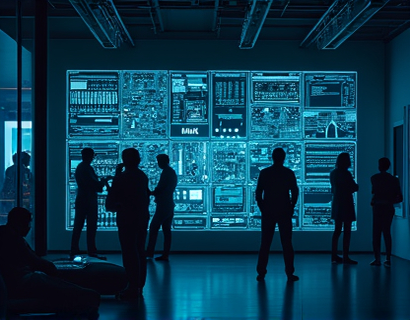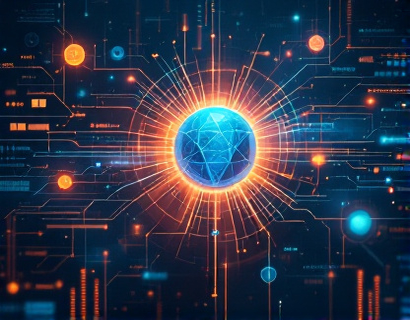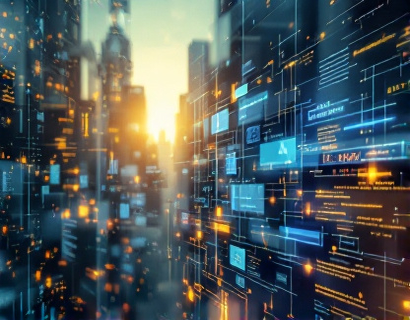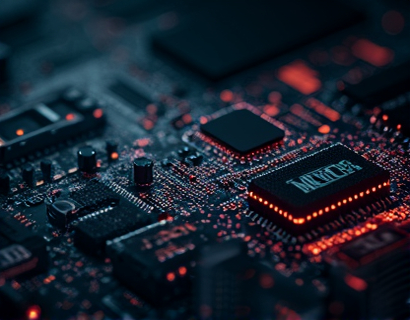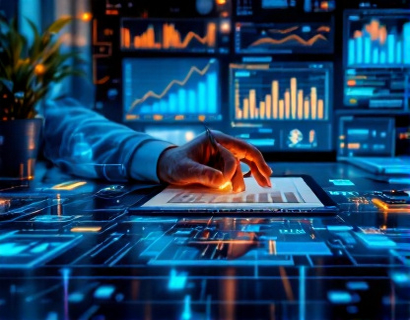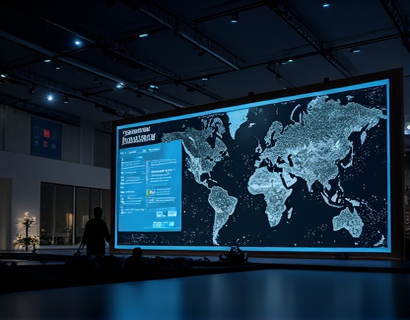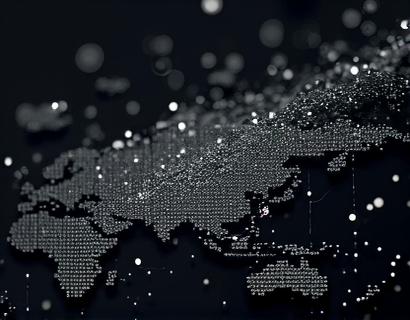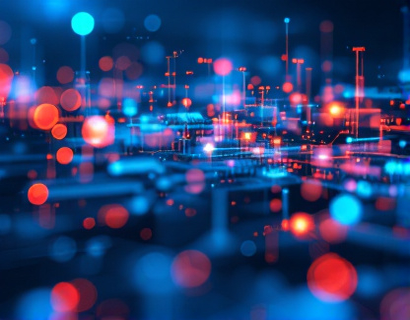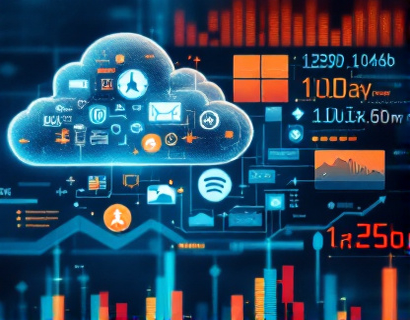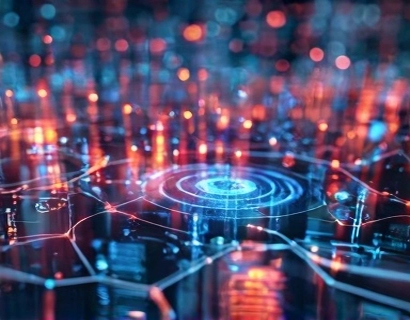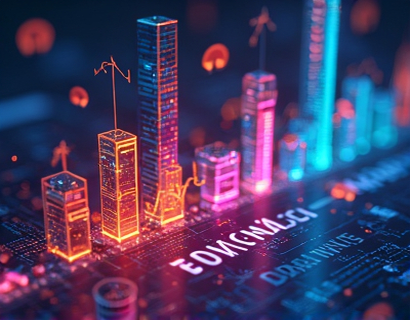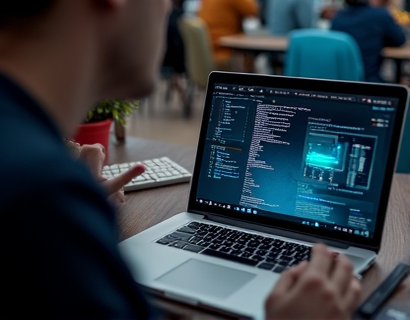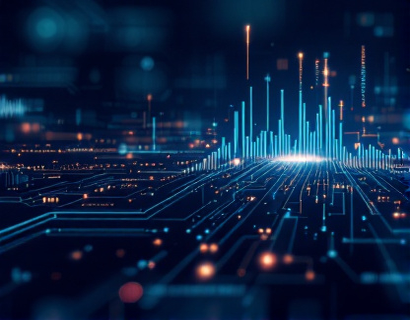Decentralized Productivity: Unleashing the Power of AI and Crypto for Next-Gen App Ecosystems
The intersection of cryptocurrency and artificial intelligence (AI) is giving rise to a new paradigm in digital productivity. This transformative blend is redefining how we approach app ecosystems, making them more efficient, secure, and user-centric. The emergence of decentralized applications (dApps) powered by blockchain technology and AI is set to revolutionize the way we interact with digital tools, offering unprecedented levels of automation, transparency, and control. This article delves into the intricacies of this fusion, exploring how it is reshaping the future of productivity and user experience for tech enthusiasts and professionals alike.
The traditional app ecosystem is characterized by centralized control, where a single entity manages and maintains the application's infrastructure and data. This centralization, while providing a structured approach, also introduces vulnerabilities such as single points of failure, data breaches, and limited user autonomy. Decentralization, on the other hand, distributes control across a network of nodes, enhancing security and user empowerment. When combined with AI, this decentralized model becomes even more potent, enabling intelligent, self-managing systems that adapt to user needs in real-time.
One of the key benefits of integrating AI into decentralized app ecosystems is the enhancement of user experience through personalized and intelligent services. AI algorithms can analyze user behavior and preferences, providing tailored recommendations and automating routine tasks. For instance, a decentralized productivity app could use AI to optimize task scheduling based on user habits, availability, and priority levels, ensuring maximum efficiency and minimal manual intervention. This level of personalization not only boosts productivity but also enhances user satisfaction by making the app feel more intuitive and responsive.
Security is another critical area where the combination of AI and decentralization shines. Traditional centralized systems are often targets for cyberattacks due to their centralized nature. In a decentralized system, data is spread across multiple nodes, making it significantly harder for attackers to compromise the entire network. AI can further bolster security by detecting and mitigating threats in real-time. Machine learning models can identify unusual patterns or behaviors that indicate a potential security breach, allowing the network to respond proactively. This synergy between decentralization and AI creates a robust security framework that is both resilient and adaptive.
The decentralized nature of these app ecosystems also promotes greater transparency and trust. Blockchain technology ensures that all transactions and data exchanges are recorded on a public ledger, which is immutable and accessible to all participants. This transparency reduces the risk of fraud and manipulation, as every action is traceable and verifiable. AI can enhance this transparency by providing clear and understandable insights into the system's operations, helping users make informed decisions. For example, an AI-driven dashboard could visualize data flow, transaction histories, and system performance, giving users a comprehensive overview of the ecosystem's health and functionality.
Another significant advantage of decentralized AI-powered app ecosystems is their scalability and flexibility. Traditional centralized systems often struggle to scale beyond a certain point due to the limitations of their infrastructure. Decentralized systems, however, can easily scale by adding more nodes to the network, distributing the load and maintaining performance. AI algorithms can optimize this scaling process by dynamically allocating resources based on current demand, ensuring that the system remains efficient and responsive. This flexibility is particularly beneficial for dApps that need to adapt to varying user loads and computational requirements.
Let's explore a practical example to illustrate these benefits. Consider a decentralized project management tool that leverages AI to streamline team collaboration and task management. This dApp could use blockchain to securely store project data and ensure that all team members have access to the most up-to-date information. AI algorithms could analyze project timelines, resource availability, and team performance to suggest optimal task assignments and deadlines. The system could also automatically handle contractual agreements and payments using smart contracts, reducing administrative overhead and ensuring that all parties adhere to the agreed terms. This level of automation and intelligence not only enhances productivity but also builds trust among team members by ensuring transparency and accountability.
The development of such decentralized AI-powered app ecosystems involves several technological components. At the core is the blockchain platform, which provides the decentralized infrastructure for the app. Popular platforms like Ethereum, Binance Smart Chain, and Polkadot offer the necessary tools for building smart contracts and managing decentralized networks. These platforms support a wide range of programming languages and development frameworks, allowing developers to create sophisticated dApps with ease.
AI integration requires a different set of tools and techniques. Machine learning models can be trained using data from the blockchain network, providing insights and predictions that enhance the app's functionality. Frameworks like TensorFlow and PyTorch are commonly used for building and deploying AI models. These models can be deployed on the blockchain itself or on off-chain servers, depending on the computational requirements and latency constraints. The key is to ensure that the AI components are seamlessly integrated with the blockchain infrastructure, creating a cohesive and efficient system.
One of the challenges in building decentralized AI-powered app ecosystems is data management. In a decentralized environment, data is distributed across multiple nodes, which can complicate data retrieval and processing. However, this challenge also presents an opportunity for innovation. Techniques like federated learning allow AI models to be trained across multiple decentralized devices without centralizing the data. This approach preserves user privacy while still enabling the AI to learn from a diverse set of data sources. By leveraging such techniques, developers can create AI-driven features that respect user privacy and comply with data protection regulations.
Another important aspect is the economic model that underpins these decentralized app ecosystems. Cryptocurrency plays a crucial role in incentivizing participation and ensuring the network's sustainability. Token economies can be designed to reward users for contributing resources, providing valuable insights, or participating in governance decisions. For example, a decentralized social media platform could use tokens to reward users for creating high-quality content or engaging in constructive discussions. These tokens can then be used to access premium features, vote on protocol upgrades, or even traded for other cryptocurrencies. This economic model not only fosters a vibrant community but also aligns the interests of all participants with the success of the ecosystem.
The potential applications of decentralized AI-powered app ecosystems are vast and varied. In the realm of productivity, beyond project management, such ecosystems can revolutionize areas like content creation, supply chain management, and financial services. For instance, a decentralized content creation platform could use AI to assist writers and artists by providing research, suggestions, and even generating initial drafts. In supply chain management, AI can optimize logistics and inventory management, while blockchain ensures transparency and traceability of goods. In finance, decentralized lending and trading platforms can use AI to assess creditworthiness and execute trades with minimal human intervention, enhancing efficiency and reducing costs.
For tech enthusiasts and professionals, these app ecosystems offer a fertile ground for innovation and experimentation. Developers can build and deploy their own dApps, leveraging the power of blockchain and AI to create solutions that address specific pain points. The open nature of these ecosystems encourages collaboration and knowledge sharing, fostering a community-driven approach to development. This collaborative environment not only accelerates innovation but also ensures that the apps are continuously improved and adapted to user needs.
As the technology matures, we can expect to see more sophisticated and user-friendly decentralized app ecosystems emerge. The user interface and experience will become more intuitive, making it easier for non-technical users to benefit from these advanced systems. Additionally, interoperability between different blockchain platforms will enhance the ecosystem's versatility, allowing users to seamlessly switch between different dApps and services.
In conclusion, the convergence of cryptocurrency and AI is paving the way for a new generation of decentralized app ecosystems that are more secure, efficient, and user-centric. These ecosystems have the potential to transform various industries by providing intelligent, transparent, and resilient solutions. As the technology continues to evolve, it is essential for tech enthusiasts and professionals to stay informed and engaged, ready to harness the full potential of this exciting frontier.



